José Rizal Shrine - Calamba (Laguna)
The childhood home of one of the Philippines' greatest national heroes: José Rizal.
Regarded as one of Philippines' greatest heroes; José Rizal definitely made a big mark on Philippine history. In the City of Calamba, in the Laguna province, a reconstruction of his old childhood home has become a big touristic attraction...
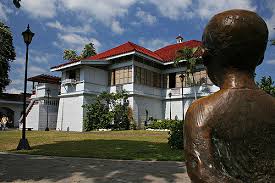
José Rizal's Life
Without going too in-depth into a lengthy history lesson, let's do this remarkable historic figure some justice.
José Rizal was a very intelligent Filipino that lived during the late 1800s. He spoke over 20 languages and his academic pursuits covered multiple disciplines, where he excelled in medicine, philosophy, and literature.
Rizal was a skilled physician. Specializing in ophthalmology, he set up a successful practice in Hong Kong and used his medical skills to help those in need.
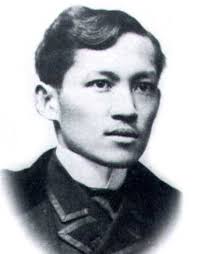
By the end of his life, José Rizal was executed by the Spanish for the crime of rebellion. He was a leading force and influence during the Philippine Revolution, that ultimately led to the Philippine Independence, on September 29, 1898.
Born on June 19, 1861, José Rizal grew up in a original two-story Spanish colonial house in Calamba, Laguna. During WWII, Rizal's original house was destroyed, but was rebuilt at the same site on June 19, 1950.
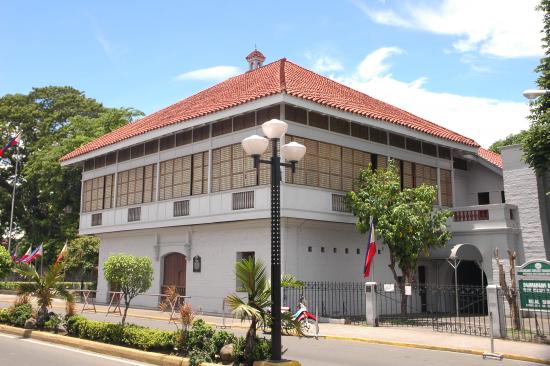
Visiting José Rizal Shrine
With Rizal's original belongings kept intact inside the shrine, visitors can roam the house freely. Original and relevant trivia are written on the walls and the rooms are carefully reconstructed and presented the way they used to be when José Rizal used to live there, in the late 1800s.
Visitors can explore other key structures within the shrine's grounds. These include the gallery, where some of Rizal's manuscripts, clothes, and even surgical instruments are showcased, offering insight into his various talents and interests. Additionally, a library and audio-visual room provide opportunities to delve further into his life and the historical context of his time.
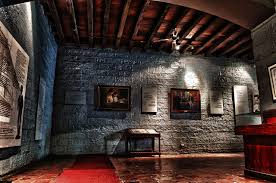
The shrine has a large lawn with a replica of a nipa hut Rizal used to play with his sisters in. Next to the hut is a statue of a young José Rizal, with his dog. This statue was constructed in 1996 for the centennial celebration commemorating Rizal's death.
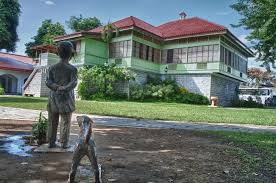
Even though al of the rooms were carefully reconstructed the way they used to be back in the late 19th century, there's one feature of the house that is still from the original house. The old well, next to the dining room, has survived the World Wars, and has now become a 'wishing well' for the José Rizal Shrine's visitors. Noteworthy is also that about 20 meters away from the old 'wishing well', the remains of José Rizal's parents (Francisco Mercado and Teodora Alonzo) are buried in the garden, next to a narra tree.
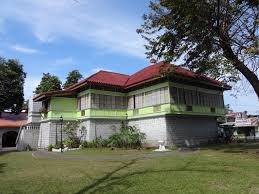
National Shrine Level 1
The house itself, which is really a typical 'bahay na bato' (literally meaning 'house of stone' in Tagalog); a typical upper-class house built during the Spanish colonial era, was designated as a National Shrine (Level 1) by the National Historical Commission of the Philippines. Even though it's just a replica of the original house that got destroyed during WWII, it still holds a very special place in many Filipinos' hearts, and ever remains one of the most frequented historical sites in the Philippines.
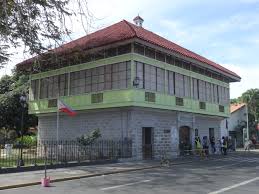
Ease of Access José Rizal Shrine
The José Rizal Shrine is in the middle of Calamba City and easily accessible along Mercado Street and Rizal Street. The Rizals where also known by their other surname 'Mercado', hence the site is located at the crossing of Mercado Street and Rizal Street.
The Rizal Shrine actually holds no entrance fee, but donations are accepted and appreciated. The house is open from Tuesday to Saturday, 8:30 am to 12:00 nn and 1:00 pm to 4:30 pm.
One hotel nearby that you may enjoy is Sol Y Viento Mountain Hot Springs Resort.
Click here for more things to do in Laguna province.


